 Have you or someone you love been told “you need to get your blood pressure down?”
Have you or someone you love been told “you need to get your blood pressure down?”
In our disease dodging series, we provided information last month about how you can reduce your cholesterol, naturally. We know another extremely common concern is high blood pressure.
Whether you have been told you need to reduce your blood pressure or are just trying to maintain a healthy level, we want to help show you how REAL food can be the perfect medicine!
Nearly half of all adults in the United States have some type of cardiovascular disease. This is according to the American Heart Association’s annual report, Heart and Stroke Statistics, published last week, defining the condition as coronary heart disease, heart failure, stroke or high blood pressure.
What is high blood pressure?
Blood pressure is the force of blood pushing against blood vessel walls. High blood pressure, also known as hypertension, occurs when the pressure in your arteries is higher than it should be. When you have high blood pressure, there are usually no signs or symptoms, which is why it is so dangerous. The good news is it can be managed!
What causes high blood pressure?
 There are several risk factors for high blood pressure, including being overweight or obese, using tobacco, not being physically active, eating too much salt (or sodium), too little potassium, drinking too much alcohol, and stress.
There are several risk factors for high blood pressure, including being overweight or obese, using tobacco, not being physically active, eating too much salt (or sodium), too little potassium, drinking too much alcohol, and stress.
So, can food help naturally lower blood pressure?
The answer is YES! And, no shocker here…REAL foods are the key! These blood pressure lowering REAL foods are naturally low in sodium while being loaded with nutrients that help keep blood pressure – and weight – at a healthy level.
Which are the best foods to eat for a healthy blood pressure?
Potassium-rich foods (aka plant foods!):
Eating foods rich in potassium can actually reduce sodium — they encourage your kidneys to excrete more sodium, leading to lower blood pressure. You may be thinking “more potassium?”, no problem, “I will eat more bananas!” Although bananas are good, believe it or not, there are many other foods that have even more potassium than bananas and are higher in beneficial antioxidants!
 Fruits – especially cantaloupe, honeydew, kiwi, oranges, raisins and dates.
Fruits – especially cantaloupe, honeydew, kiwi, oranges, raisins and dates.- Veggies – a variety of fresh or frozen vegetables will help boost your potassium…especially beneficial veggies are parsnips and beets! Try roasting them with our Parsnip Fries and Roasted Beet and Mixed Berry Salad!
- Tomatoes – fresh tomatoes contain potassium, and you can get EVEN MORE in the form of tomato sauce, tomato paste and sun-dried tomatoes.
- Leafy Greens such as spinach, bok choy and Swiss chard are excellent sources.
- Legumes such as beans and lentils — white beans are among the best!
- Potatoes – sweet and other types of potatoes pack more potassium than a banana ounce for ounce.
If you are into counting, aim for 4,700 mg of potassium a day. Most Americans (98% of American Diets are Potassium Deficient) are lucky to get 2,000-3,000, simply because of their lack of veggies. Next time you look at your plate, triple up on vegetables, and scale down your portion of meat. And, let fruit, yogurt, and dark chocolate be your dessert! (Note: people with kidney disease may need to limit potassium. If this is you, consult with your doctor.)
Calcium-rich foods:
Often, people with low calcium intake can have high blood pressure. While calcium supplements haven’t been conclusively shown to lower blood pressure, calcium-rich diets do, especially when these high calcium foods are also high in potassium and magnesium. Focus on including foods high in calcium — and keep in mind, this list goes way beyond dairy!
 Yogurt is a great source of calcium AND potassium, and also provides beneficial bacteria for good gut health!
Yogurt is a great source of calcium AND potassium, and also provides beneficial bacteria for good gut health!- It is well known that milk and cheese are also good sources of calcium, but try to keep their intake to about 1 cup per day.
- Greens high in calcium include bok choy, kale, mustard and collard greens — try using collard greens as a lettuce wrap in our Sweet Potato Collard Green Wraps.
- Go nuts! All nuts are beneficial, and almonds have the highest amount of calcium.
- A variety of all vegetables will give you a calcium-rich diet, and okra and broccoli are especially high on the list!
Dark chocolate or cocoa:
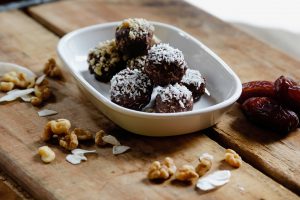 We understand the urge to satisfy a sweet craving! Instead of processed cakes, brownies or cookies, indulge in an ounce of dark chocolate (60% or higher) or sweet treats with cocoa powder (such as Chocolate Bliss Breakfast Cookies and Chocolate Chia Energy Bites).
We understand the urge to satisfy a sweet craving! Instead of processed cakes, brownies or cookies, indulge in an ounce of dark chocolate (60% or higher) or sweet treats with cocoa powder (such as Chocolate Bliss Breakfast Cookies and Chocolate Chia Energy Bites).
Both dark chocolate and cocoa powder are rich in flavonoids, which are plant compounds that cause blood vessels to dilate. Studies have found that flavonoid-rich cocoa improved several markers of heart health over the short term, including lowering blood pressure!
Remember, when it comes to dark chocolate, avoid chocolate processed with alkalai to get the most nutritional benefit. Check out our coaching tip for more about dark chocolate, including how to choose the best kinds!
Tea Time!
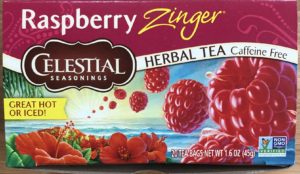 Say yes to Hibiscus Tea such as Celestial Seasonings Raspberry Zinger. Delicious hot or cold, this “red” tea is not only vibrant in flavor and color, it’s the highest in antioxidants of any tea (or other beverage) for that matter!
Say yes to Hibiscus Tea such as Celestial Seasonings Raspberry Zinger. Delicious hot or cold, this “red” tea is not only vibrant in flavor and color, it’s the highest in antioxidants of any tea (or other beverage) for that matter!
Studies show that 3 cups a day of this prized tea can reduce blood pressure levels by 7%.
Mountain Berry Iced Tea is one of our favorites!
What foods should you cut back on?
High sodium foods:
What is responsible for two-thirds of our sodium intake? It’s not the salt-shaker, but rather, processed foods that truly pack the lion’s share of our intake. And not only are processed foods extremely high in sodium, but they are often stripped of the nutrients like potassium and magnesium that help counterbalance our blood pressure. While we should be eating less than 2,300 mg/day of sodium, most people eat much more.
- Processed meats do more harm than good! Cut back on ham, bacon, lunchmeat, and the ever-popular takeout and delivery pizza. Meals from chain and fast food restaurants can be astonishingly high in sodium as well.
- Reduce the amount of bread! You might be surprised that bread products are a large contributor of sodium to the American diet. So, swapping out a potato for bread or a salad for sandwiches will go a long way in helping lower and maintain a healthy blood pressure.
- Read those ingredient labels! High amounts of sodium can be hiding in bottled salad dressings, canned soups, peanut butter, instant oatmeals, and even cooked rotisserie chickens.
Added sugar and refined carbs:
In addition to sugary foods’ ability to rack up calories and make you gain weight, they also do a good job of helping raise your blood pressure! And it’s not just sugar! All refined carbs and processed carbs, such as the kind found in white flour, convert rapidly to sugar in your blood stream. So again, the best solution is to eat REAL whole foods!
Lifestyle habits also play an important role in keeping blood pressure in check!
 Maintain a healthy weight: following a REAL food diet will naturally fill you up on fewer calories, helping you lose weight “the right way”.
Maintain a healthy weight: following a REAL food diet will naturally fill you up on fewer calories, helping you lose weight “the right way”.- Exercise: walking just 30 minutes a day can help lower your blood pressure, plus more exercise helps reduce it further. The effect is even greater when weight loss is paired with exercise.
- Learn to manage stress. Chronic stress can contribute to high blood pressure. Check out our coaching tip for more on managing stress, and here are two evidence-based tips to try:
- Listen to soothing music. Calming music can relax your nervous system. Research has shown it’s an effective complement to other blood pressure therapies.
- Work smarter. Working excessively, and stressful work situations in general, are linked to high blood pressure.
- Limit alcohol. While some research has suggested that low-to-moderate amounts of alcohol may protect the heart, those benefits may be from the act of “relaxing and connecting with others” while the alcohol itself implies more negative effects. Drinking alcohol in any quantity may raise your blood pressure. Limit your intake to no more than one drink a day for women, two for men.
Just like cholesterol, focusing on REAL food can be the key to reducing blood pressure and keeping it within a healthy range. Wouldn’t it be great to say…
“I don’t need a prescription…my medicine is REAL food!”
Please share this with someone you know who might need it and, in case you missed it, check out our January disease dodging tip on managing cholesterol.
Sources:
https://www.ncbi.nlm.nih.gov/pubmed/21747015, https://www.ncbi.nlm.nih.gov/pubmed/17685082, https://www.ncbi.nlm.nih.gov/pubmed/18614722/, https://academic.oup.com/ajcn/article/88/1/38/4648835, https://www.ncbi.nlm.nih.gov/pubmed/20226955, https://www.ncbi.nlm.nih.gov/pubmed/23558162, https://www.ncbi.nlm.nih.gov/pubmed/21357284, https://openheart.bmj.com/content/1/1/e000167.full https://www.ncbi.nlm.nih.gov/pubmed/15107009, https://www.ncbi.nlm.nih.gov/pubmed/27930480, https://www.ncbi.nlm.nih.gov/pubmed/23525435, https://www.ncbi.nlm.nih.gov/pubmed/15107009, https://www.ncbi.nlm.nih.gov/pubmed/26365454, https://www.ncbi.nlm.nih.gov/pubmed/27096963, https://www.ncbi.nlm.nih.gov/pubmed/27853150, https://www.ahajournals.org/doi/pdf/10.1161/01.hyp.0000238327.41911.52, https://www.ncbi.nlm.nih.gov/pubmed/16922819
 LEARN MORE ABOUT THE NAPKIN!
LEARN MORE ABOUT THE NAPKIN!
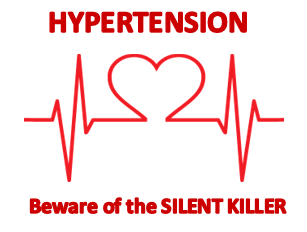
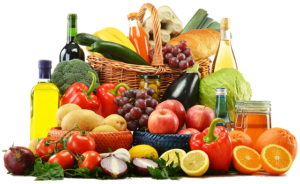

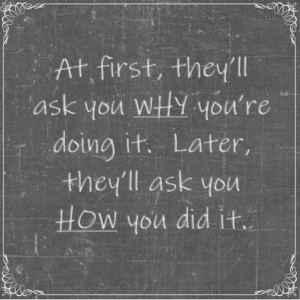
Leave A Comment